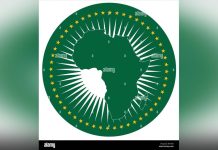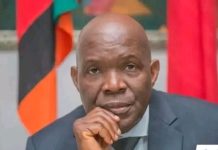Africa-Press – Zambia. What does 2021 Africa month mean to 1.2 billion Africans seeking a better and secure future amidst the global health pandemic? While the COVID-19 death toll is lowest in the continent of Africa compared to other parts of the world, Africa has to prepare for the worst in terms of the economic and social impacts of Covid-19. African economies are expected to be in a sharp recession as they depend largely on external financial flows from economies that have been hit hardest by Covid-19. Most financial inflows into the African economy are from tourism and other raw materials it exports to Europe and Asia such as copper, timber and oil.
Prior to Covid-19, African policy-makers were grappling with two significant challenges; rising poverty and rising national debts, which have not gone away. According to the World Bank, Africa is the only continent in the world that is seeing a rise in the number of people living with poverty. The absolute number of people living below the poverty line was estimated to have grown to 433 million Africans in 2018, rising from 284 million in 1990. With Covid-19 now, we expect that the number of people living below poverty will increase and will do so exponentially. With regard to its total debt burden, the total debt stock of the continent stood at over 67% of its GDP in 2020, above the levels of Debt sustainability as guided by the International Monetary Fund(IMF). For us who care about natural capital, we know that high debts and high poverty represents a bleak future for nature that we must arrest.
Despite Africa’s resources and people having created fortunes for a number of successful multinationals and a few individuals from within and outside Africa, poverty and national debts are rising exponentially. If not well managed, these realities will halt recovery of Africa’s economy during and post Covid-19. To the fallen Africa independence hero, high poverty and high national debts are not the freedom she or he died for. Zambia is the poster child for an African country that failed to honour its debt service obligations due to the size of the debt relative to the economy and the Covid-19 induced negative growth rates.
Zambia’s public external debt position as of the end of December 2020 had increased by 9 per cent to US $12.74 billion from US$11.65 billion as of the end of December 2019. Regarding debt service, a total of US $639.68 million was paid to various creditors compared to the US $1,091 million in 2019, a decrease of 41.4 per cent. The significant reduction in external debt service is explained by the debt service suspension granted to Zambia by members of the G20/Paris Club and other private creditors from May to December 2020, under the Debt Service Suspension Initiative (DSSI).
The Zambian Government has equally engaged the International Monetary Fund(IMF) for Extended Credit Support, but the negotiations have protracted, with some analysts reporting that the deal won’t be closed any time soon. Equally, the discussions for debt service suspension with the Euro Bondholders have not yielded any fruit, with the Zambian Government electing not to make the semi-annual bond repayments. Angola and the Republic of Congo have similar levels of indebtedness.
As the debt stress levels continue to increase, innovative financial mechanisms are needed to safeguard a series of African countries from worsening economic, health and environmental circumstances.
Reversing these high poverty rates growing exponentially will be difficult with a huge debt burden, but not impossible to resolve. In addition to the proposals laid out by the G20 countries to re-negotiate debts G20 countries owe the world whose repayments have been made difficult by the Covid-19 induced meltdown of the global economy, Africa, can however capitalise on its natural resources by considering debt settlements instruments that help to restore nature and simultaneously drive a green recovery and create green jobs.
One approach that can achieve these aims is the use of Debt for Nature Swaps. Debt for Nature Swap is a transaction where a country has its debt purchased, renegotiated or forgiven by its creditors (fully or partially) with specific conditions, for example, that savings on debt service are invested in environmental conservation activities (Mathias, et al., 2018). Therefore, the country is freed from the strict debt service payment on one end and invests towards conservation and enacting environmental protection measures on the other end.
The concept of Debt for Nature Swaps was first initiated in 1967 by James Goff of the Experimental Conservation Agency with association to the Bidborough Badgers as an opportunity to deal with the problems of developing nation indebtedness and its consequent deleterious effect on the environment (Visser & Mendoza, 1994). Lovejoy (1984) suggested that ameliorating debt and promoting conservation could be a win-win situation for the country and for nature.
Countries that have leveraged the debt-for-nature swaps typically have several threatened or endangered species, experience rapid deforestation, and have relatively stable, often democratic, political systems. Since 1987, Debt-for-Nature agreements have generated over US$1 billion for conservation in developing countries (Sheikh, 2010).
Zambia’s failure to agree with its creditors on a debt service suspension programme represents an opportunity for a Debt for Nature Swap which it has experience with. Learning from the past and similarly structured transactions, the Government of Zambia in 1993 established a debt conversion programme that permitted an orderly conversion of external debt owed to its creditors purchased by many NGOs to restore nature.
In this programme, funded by the World Bank debt buy-back and facilitated by the Debt-for-Development Coalition (a non-profit institution that executed debt-for-nature swaps on behalf of single NGOs), NGOs purchased Zambian debt at 11 per cent. They received a dollar-denominated note worth 16.5 per cent (WWF Report, 2003).
Despite being viewed as an innovative financial option to relieve debt distress and achieve environmental and developmental outcomes; Debt-for-Nature swaps have yet garnered worldwide recognition. International observers have raised concerns over the perceived inefficiency of debt-for-nature swaps compared to other financial mechanisms and the potential risks that debt relief deals pose to a developing country’s sovereignty (Didia, 2016).
However, failure to enter into such deals can only make the countries with high levels of debt not only default but also continue with the massive degradation of the environment as they try to find solutions out of a vicious debt trap.
In conclusion, Debt for Nature swaps can only really work when the country is at a high risk of defaulting on the debt payments mainly because the debt is bought at a discount. With the Zambian credit rating being low graded and with a record of a default, it is the right time to look at issuing Debt for Nature swap.
Another issue the Debt for Nature swaps would address is the significant challenge of attracting more private investment with conservation objectives over the long term and also helping to relieve the country from debt distress aggravated by the impact of Covid-19. Beyond the debt challenge, the Covid-19 pandemic has yet again exposed the weaknesses that characterise most African economies that need urgent transformation.
These include high vulnerability of Africa’s nature due to high levels of poverty and a drive for growth; a high import bill for agriculture and manufactured goods that could have been produced locally that have a huge global carbon footprint, export of raw materials such as copper, cocoa and unprocessed oil and inadequate financial and trade linkages between African economies.







